Project News
2018-04-30
Monthly Report for April 2018
Bhutan at a Glance: Geography
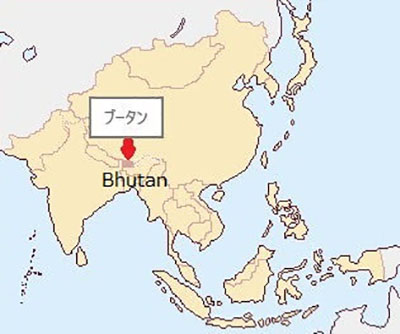 Location map of Bhutan (after MoFA)
Location map of Bhutan (after MoFA)
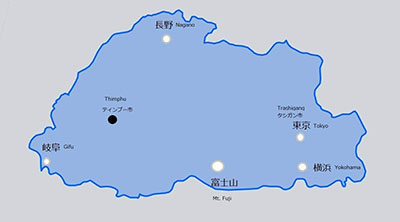 Country map of Bhutan
Country map of Bhutan
The Kingdom of Bhutan is a landlocked country in South Asia, which is bordered by India and China. At a distance of about 4,800 km from Tokyo, it takes more than 10 hours to reach to Bhutan by plane via Thailand and India. The total land area of Bhutan is 38,384 km2, which equates to about one tenth of Japan's (NSB, 2017) and almost same as the area of the Japanese Kyushu Island. The distance from the eastern to the western border is about 330 km, and 180 km from the northern to the southern border, which confirms that Bhutan is very compact (JICA, 2014). Given that the Himalayan Mountains were lifted by the subduction of the Indian Plate under the Eurasian Plate 50 million years ago, Bhutan is also a mountainous country with an average altitude of 2,200 m (CIA, 2018). Therefore, there are many mountain paths in Bhutan; for example, it takes two to three days to drive about 500 km from the capital city of Thimphu to Trashigang in the east, even though the direct distance is only 190 km.
References:
Bhutan at a Glance 2017 (PDF/5.20MB), National Statistics Bureau of Bhutan (NSB), 2017
(Japanese only) Report on Bhutan Domestic Transportation Network, JICA et al., 2014
The World Factbook (external link), US Central Intelligence Agency (CIA), 2018
Full-scale Buildings Examination Facility
The project is constructing an examination facility for full-scale traditional buildings on the premises of the Department of Culture (DOC) in Thimphu. The facility will examine the strength of different structures, their breaking patterns and the effect of reinforcements, using static testing on gradual loads against composite masonry specimens made of rammed earth and stones. Moreover, the facility, which is equipped with a shaking table, will perform dynamic testing to simulate buildings' responses to earthquakes. The construction, which started in December 2017, is expected to end by the summer 2018.
 construction site before work started
construction site before work started
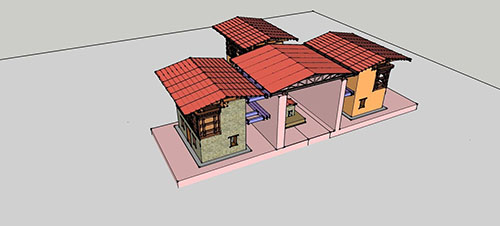 complete image of the examination facility
complete image of the examination facility
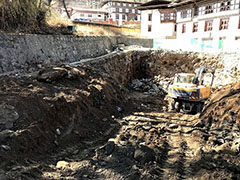 Excavating the site (January 2018)
Excavating the site (January 2018)
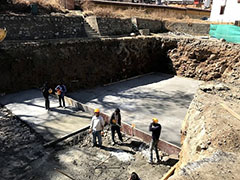 Base concreting (February 2018)
Base concreting (February 2018)
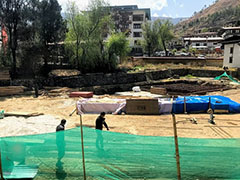 Equipment for static and dynamic testing, which arrived from Japan via India (March 2018)
Equipment for static and dynamic testing, which arrived from Japan via India (March 2018)
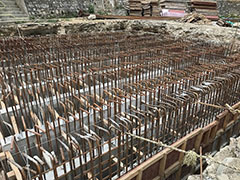 Iron frame at the base of a specimen (April 2018)
Iron frame at the base of a specimen (April 2018)
- About JICA
- News & Features
- Countries & Regions
- Our Work
- Thematic Issues
- Types of Assistance
- Partnerships with Other Development Partners
- Climate Change / Environmental and Social Considerations
- Evaluations
- Compliance and Anti-corruption
- Science and Technology Cooperation on Global Issues
- Research
- JICA Development Studies Program / JICA Chair
- Support for the Acceptance of Foreign HRs / Multicultural and Inclusive Community
- Publications
- Investor Relations
